Light armor set foot
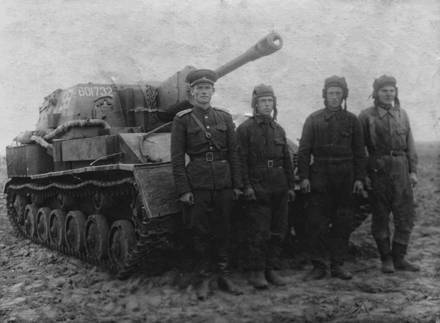
In the middle of August 1941, a young man appeared in the door of the office of the chief designer of the Gorky Automobile Plant, Andrei Lipgart, without a report. He was wearing an oiled tank overalls and had a ribbed cloth headset knocked to the back of his head. They were familiar for a long time and therefore were delighted to meet.
“Well, I’m assigned to you,” after a strong handshake, the visitor pulled an envelope from behind his shirt. The owner of the cabinet opened the letter. With every line he read, he became more and more excited.
It was an order signed on the eve of the People's Commissar of Medium Engineering, in which the Gorky residents were ordered to immediately begin the development of light production tanks, and the first cars were supposed to get off the assembly line no later than October 15. Deputy tank production to Lipgart appointed Nikolai Astrov.
- Kolya, you understand that this is impossible. Two months! And the drawings? And the prototypes? And running tests? - the main designer of the auto giant scattered with sensible questions.
The guest rose from the chair.
- Tank in the yard of the plant, I drove it under its own power from the capital. The march will count in state tests of the undercarriage. Drawings and all technical documentation in the car. So we will work. - And, with a wide smile, he extended his hand to Andrei Alexandrovich.
28 September 1941, the first eight new light tanks T-60 designed by Nikolai Astrov were baptized near Moscow ...
“Go on, Comrade Astrov”
His fate was predetermined from birth: the boy, born in April 1906, in the family of a hereditary engineer and professor at the Moscow Imperial Technical School (now - N. Bauman Moscow State Technical University) simply could not become a designer. Even the revolution, the Civil War and the terrible tragedy that fell on the family - in 1919, Nicholas's father and elder brother were shot on false charges of participating in a counter-revolutionary conspiracy - could not prevent it.
Having graduated with honors in 1924, one of the metropolitan schools, the young man entered the Moscow Electric Engineering Institute and at the same time began to work as a draftsman in the Scientific Automotive Institute. Here, the talent of a young man was appreciated and began to be attracted to some design developments. Already a sophomore student Nikolai Astrov participated in the design of the rear axle of the first serial Soviet passenger car NAMI-1. It was then, by the way, that they met Andrei Lipgart, who was in charge of the design of the car body.

Having defended a diploma at 1928, a twenty-two-year-old engineer was assigned to the design bureau of the Moscow Electrozavod. And the following year, he was ... arrested as the son of an enemy of the people and a participant in an anti-Soviet conspiracy — the first wave of the "fight against sabotage."
Nikolai Alexandrovich was lucky: he was not in a cell, not in a camp, but was placed in a special technical bureau - a “sharashka” at the Butyrka prison, which was under the jurisdiction of the economic department of the OGPU and was engaged in developments in the field of military equipment. Or rather, in tank building, following the example of the rest of the world, it was also gaining strength in the young Soviet country.
Here Astrov spent almost two years. And again, with his achievements, “capable of bringing great benefits in the defense equipment of the Red Army,” he drew the attention of the powerful: Nikolay Alexandrovich was the leading engineer from December 1931, and six months later, the head of the OGPU Autotrack KB. During the trials of one of his "tractors" he met Stalin. And this meeting had a great influence on the future fate of the young engineer. Here's how the designer himself later recalled this.
“Moscow, autumn 1932 th. Very cold, with sleet, frost and thaws. Our tank from the factory "Red Proletarian", where it was made, moved under its own power on Khamovnichesky parade ground. Hearing a crash, passers-by stopped and goggled. The times were naive: an experienced combat vehicle walked through the city in the middle of the day, no additional security, except for two policemen.
The width of the parade is 60-70 meters, and the length is 250. In the summer of dust there was such that the soldiers who were trained there, sometimes barely saw each other. In spring and autumn, the soil cover turned into almost impassable dirt. It was here at the end of October that the first Soviet amphibious tank PT-1, developed in a special design bureau, should have been shown to Stalin.
It is necessary to clarify what kind of tank it was and how it attracted the attention of the leader. He had three types of propellers - tracked, wheel and propeller. With a combat mass in 14 tons, the armament, armor protection, dynamics on any type of movement PT-1 markedly exceeded the western small tanks and at that time had no analogues abroad. Although the tank was still incomplete, with the improvement it could become a useful fighting vehicle for our army ...
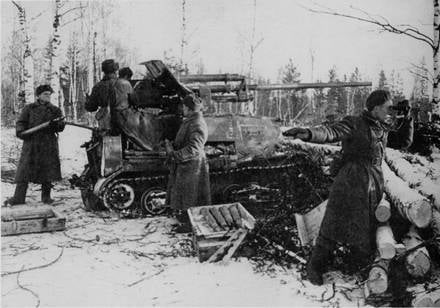
The mud was, one might say, full-fledged - just for testing the tank. All sorts of bosses fell into a tight group next to a large puddle, apparently hoping that Stalin's car would stop in front of her. However, the chief's car braked directly at the demonstration site. Stalin came out ... In a hoarse voice, he quietly asked who the speaker was. The authorities were afraid that Stalin would ask questions that no high-ranking military officer would be able to answer, and someone from the group shouted loudly: “Astrov here, quickly!” My soul reached almost heels, but still I sent my master to a cheerful trot country.
Despite the dirt, Joseph Vissarionovich slowly walked around the tank. Following in the half-step behind, I, if possible, clearly and, most importantly, loudly (we were all warned that he had a bad ear) began to report, or rather, just talked about the features of PT-1. Stalin listened carefully. Then he asked a few questions that showed that he knew tanks well.
Inspection took seven to eight minutes. Slightly nodding either to the guard, relentlessly accompanying him, or to me, Stalin quietly, as if to himself, said: "Go on, Comrade Astrov." And without saying a word to the military, he left. Taking into account the experience of previous shows, the authorities, who had sighed with relief, did not dare to approach the tank ten steps closer during the inspection, congratulated me on the success ...
Seen in a strange way imprinted in the brain of Stalin, and it was more than a great visual memory. That short meeting on the parade ground was enough for him to always recognize me and even call me by my last name. This was particularly striking at the second meeting, which was about three years from the display of the PT-1 tank. When Stalin called me, I was so taken aback that I did not immediately understand who was calling me. But this is another story».
Chief Designer
The word "continue", abandoned by Stalin on Khamovnichesky Parade, translated Astrov into the category of untouchables, and gave the designer himself a green street for creativity. And he continued to create.
In 1933, Nikolai Alexandrovich created the medium multi-turreted tank T-29, which embodied several revolutionary design solutions for the time. It was one of the first combat vehicles in the world, moving both on tracks and on wheels, that is, when launched into the series in the middle of 1930-ies, it was able to solve the problem of the operational mobility of Soviet armored forces without using rail transport or trailers.
The T-29 tank was a 30-ton car protected by 30-mm armor. The chassis consisted of four pairs of large-diameter road wheels, of which three pairs were leading on wheels. His weapons were impressive: 76-mm cannon, two 12,7-mm DK machine guns, five DT-7,62-mm machine guns located in three conical towers. The crew consisted of a 6 man. The project was generally approved by the state commission and recommended for mass production. However, the tank did not go into the series: the design team engaged in fine-tuning the machine was almost fully arrested in the 1934 year ...
Nikolai Alexandrovich Astrov and this time this bitter cup passed: a few months earlier he was released from the sharashka and appointed chief designer at twenty-eight years! - Moscow plant number 37, where he was redirected to the creation of light tanks. It was here that the floating tanks T-38 and T-40, as well as the tracked artillery tractor T-20 Komsomolets were born.
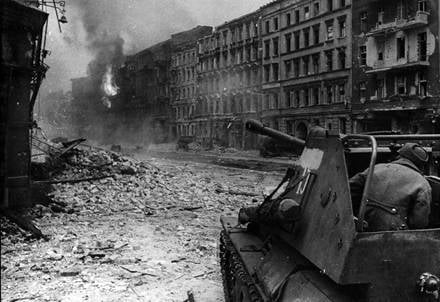
T-38 was adopted by the Red Army in February 1936, and it was in production until 1939. In total, 1382 vehicles of various modifications were produced, which were received to equip tank and reconnaissance battalions of rifle divisions, reconnaissance companies of individual tank brigades.
As part of the rifle and cavalry units, he participated in the “liberation campaign” in Western Ukraine and Belarus in September 1939. Amphibious tanks showed themselves well during the “winter war” with Finland, where they were used as mobile firing points on the flanks and between the combat formations of the attacking infantry units. In addition, the T-38 tanks were assigned to guard command posts, remove the wounded from the battlefield and deliver ammunition to the front line.
The appearance of the artillery tractor T-20 was due to the rapid development of artillery. A special position in the Red Army of the early 1930-s began to occupy the emerging anti-tank and battalion artillery as a special kind of troops. She needed a particularly high maneuverability when changing firing positions, not inferior to the mobility of the opposing tanks, the rapid withdrawal of guns to the front for direct fire at the 500 – 1000 distance in intense enemy rifle and machine-gun fire. And here the horses, with all the reverent attitude towards them in the Red Army, were no longer suitable. A light, mobile and compact tracked front-end tractor was required, the mass production of which for the rapid saturation of anti-tank battalions and artillery regiments would be under the power of industry.
Such a machine and created Astrov. His Komsomol member carried 10-mm armor, protecting the driver and gunner-commander from bullets and small fragments, was armed with a DT-7,62-mm machine gun, which allowed the crew to conduct active hostilities in the forward edge zone, where artillerymen were likely to have direct contact with adversary. Behind the cabin was the engine compartment, closed on top of an armored hood with hinged lids. Above it, behind the armored partition, there was a cargo compartment with two longitudinal three-seater seats for artillery crews. Being turned outward, they formed with their backs the sides of the loading platform for the transport of ammunition. In inclement weather, a closed tent with windows could be installed above the seats.
The average speed of the “Komsomoltsa” with a tool on the highway reached 20 km / h, along the country road it developed to 11 km / h. The car overcame a ditch with a depth of 1,4 m, a ford with a depth of 0,6 m, a half-meter wall and easily cut down trees up to 20 thickness, see.
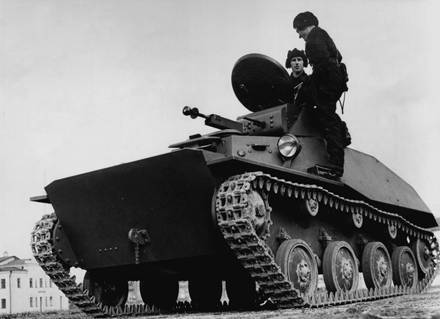
T-20 fighters participated in battles with the Japanese at Lake Hassan and the Khalkhin Gol River, in the Soviet-Finnish and World War II. In the summer of 1941, when conducting defensive battles and delivering counterattacks, these tractors were often used as machine gun tankettes for infantry fire support. He fought "Komsomolets" and in partisan detachments, where he enjoyed the special love of popular avengers.
The release of this tractor was stopped in July 1941-th because of the need to switch the factory capacity to the production of light tanks. In total, 7780 machines left the assembly line.
There is another interesting fact in the biography of Komsomolets. In July, the 1941-mm anti-tank guns were mounted on a hundred of such tractors at the Gorky Artillery Plant No. 92, and the first Soviet self-propelled artillery mounts were created in this way. Quickly passed the factory tests, open SAU, received the designation ZIS-57, took part in the battle for Moscow.
The last prewar masterpiece of Astrov was a light amphibious tank T-40, designed to perform the tasks of reconnaissance and combat escort. The original, unparalleled machine weighed in tons of 5,5, was equipped with a six-cylinder, engine-powered 85 l. with., armed with 12,7-mm heavy machine gun DShK and paired with him 7,62-mm machine gun DT.
But the very first weeks of the Great Patriotic War showed that tanks with anti-bullet armor were not suitable for it ...
Born in two weeks
In May, the 1941 of Moscow plant No. 37 was given the task to master the production of the X-NUMX-tonne T-14,5 tank — an excellent machine that surpasses all previous Soviet light tanks in terms of combat performance. It was planned that it will become the most widespread and that it will be able to produce in factories that are not able to produce T-50.
The outbreak of war broke plans. T-50 remained a great idea - because of the complexity of the production of a new machine is not much less than thirty-four, instead of many thousands of them were made all 75 pieces. And at the plant they feverishly increased the output of what they could and could do, trying to somehow make up for the catastrophic loss of armored vehicles in the army rolling back to the east.
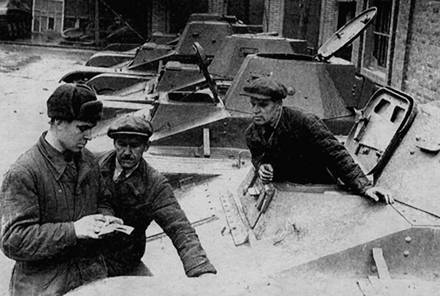
Asterov these days worked intensively on the new model. And in just two weeks, he developed a new tank of direct infantry support. The car turned out much better than the T-40 and, most importantly, in contrast to the T-50, the plant was able to.
Nikolai Aleksandrovich and the military representative Lieutenant Colonel Okunev composed a letter addressed to Stalin and in the evening dropped it in a special box at the Nikolsky Gate of the Kremlin. The very next morning, Vyacheslav Malyshev, people's commissar of the tank industry, arrived at the plant. After reading the new development, he was satisfied, but suggested replacing the main weapon cars - DShK machine gun - more powerful aviation ShVAK cannon, for which he immediately connected Astrov with the corresponding design bureau.
A week later, a new light tank, designated T-60, was tested in the Moscow region in the presence of Stalin and other members of the GKO. The car showed itself perfectly, and immediately after the tests, right on the test site, a decree of the State Defense Committee was signed (all its members were here) to take the tank into service with the Red Army, and enterprises were identified that should urgently master its mass production. The head was selected Gorky Automobile Plant. In order not to waste time on running trials, Astrov drove the car to Gorky a day later ...
By the end of 1941, the army received 1400 light tanks T-60, and all of them were made 5920 pieces. At the end of 1941 - the beginning of 1942, the volume of production of medium and heavy tanks did not cover even the minimum needs of the army. I had to fight that is. Therefore, the role of the “little ones” in the defense of Moscow is difficult to overestimate. And the breakthrough of the blockade of Leningrad at the beginning of 1943 was generally the high point of T-60: only they, small and brisk, were able to cross the Neva on January, on the move, across the Neva on ice, without preparing ferries.
On the same day a unique battle took place, inscribed in gold letters in the history of the Great Patriotic War. After forcing the Neva, the commander of a tank company of the 549 tank battalion of the 61 tank brigade, Lieutenant Dmitry Osatyuk, was reconnoitering: in the morning the offensive was to resume. But suddenly the Germans launched a counterattack. The T-60, a lonely, rolling far in advance, rushed up to the battalion of Hitler’s infantry, and three “Tigers” were cut off from the 502-th battalion of heavy tanks. Attempting to rush to their open field led to inevitable death: the close gap of 88-mm projectile 56-ton monsters easily turned the 6-ton kid to the side, and a direct hit turned into a shapeless pile of melted scrap metal.
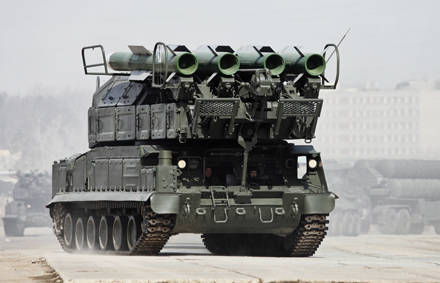
Osatyuk ordered the foreman Ivan Makarenkov, a driver-mechanic, to “dance” to the forest, on the edge of which a battery of anti-tank guns was disguised. When the Germans once again turned with a screech and went after the elusive "Sixtieth", having risen to the positions of the gunners, gun shots rang out.
Blowing a 76-mm blank from one hundred meters into the side of a tank slowly creeping across a snow field is a task for freshmen cadets. Less than five minutes later, as the two "Tigers" were already burning, and the third, putting an impenetrable forehead to the fire, slowly retreated to dusk.
Meanwhile, tanks from the company of Senior Lieutenant Osatyuk drove the German infantry, left without armor, into a large pit, but could not completely destroy the Nazis - they every time tried to throw grenades close to the edge of the T-60 pit. Having clarified the situation, the company company decided on a bold act: its tank accelerated and jumped off the cliff directly onto the heads of the enemies. Not dropping speed, Makarenkov drove the car in circles through the pit, not choosing the path. Osatyuk snatched the support check of the machine gun trigger, after which the DT began to fire independently, while the officer shot the moving enemies from the cannon. When the tank stopped firing and stopped, in front of him, with their hands raised, 27 froze to death by frightened Germans - all that remained of the battalion.
10 February 1943 by decree of the Presidium of the Supreme Soviet of the USSR, senior lieutenant Dmitry Osatyuk and foreman Ivan Makarenkov were awarded the title Hero of the Soviet Union. This was the only case in the history of the war, when the crew of the tank in full received Gold Stars.
"Inexhaustible Locust"
From mid-October, Astrov, 1941, fulfilling the military’s wish to strengthen the T-60 armor and weapons, began work on its modernization.
The new machine received an 45-mm gun with ammunition in 90 shots, a more powerful engine consisting of two GAZ-202 engines paired on one shaft. The thickness of the frontal armor was increased to 30 – 45 mm, the turret - to 35 mm. The mass of the tank at the same time increased to 9,2 tons.
The tests began in January 1942-th and were held in extreme conditions - with frosts down to —35 ° C and a meter-long snow cover. But the car showed itself well done and 6 March under the designation T-70 was adopted.
In total, 1942 / 1943 issued 8226 of various modifications of this tank, which allowed him to become the third largest in the Red Army. The Germans also called this machine "indestructible locust", marveling not at the survivability, but at the number of Soviet light tanks, simultaneously appearing on the battlefield.
T-70 were in service with tank brigades and regiments of the so-called mixed organization. The state brigade had 32 tank T-34 and 21 tank T-70, in the tank regiment X-TUMX and T-23 were armed with 70. Mixed tank brigades could be part of tank and mechanized corps or be separate, the regiments were part of the mechanized brigades.
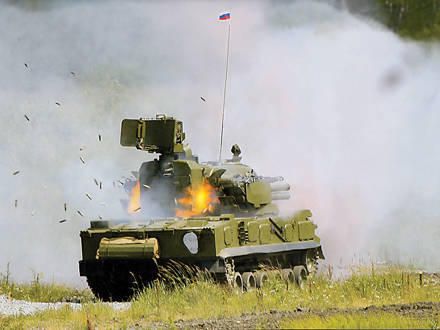
Baptism T-70 received in June-July 1942 year on the South-Western Front. Alas, the first battles have already shown that their armament does not allow them to fight with German medium tanks, and armor protection is insufficient when using them as tanks for direct support of infantry.
At the same time, the troops also noted the positive advantages of the "seventy." According to many tank commanders, T-70 was the best suited for the pursuit of the retreating enemy, which became relevant in the 1943 year. The reliability of its power plant and chassis were higher than that of the T-34, which made it possible to make long marches. In addition, the "seventies" was low-noise, which again differed favorably from the roaring engine and Thirty-Four thundering the caterpillars, which at night, for example, could be heard for 1,5 km.
The final point in the combat career of light tanks was set by the Kursk Battle, during which it became clear that the opportunity to survive, not to mention becoming the winner, in open battle with new German heavy tanks in T-70 is close to zero. Although in the hands of skilled tankers and this "kid" became a formidable weapon. So, 6 July 1943, in battles for the village of Pokrovka, the crew of Lieutenant Boris Pavlovich from the 49 Guards Tank Brigade managed from their T-70 to destroy three medium German tanks T-IV and one Panther!
By the spring of 1944, the T-70 was expelled from the states of the Red Army tank units. Nevertheless, they continued to be exploited for quite a long time and took part in hostilities until the end of World War II. In addition, these tanks were used in the self-propelled artillery divisions, regiments and SU-76 brigades as command vehicles.
By the way, the light self-propelled gun itself is also the brainchild of Nikolai Alexandrovich Astrov, he also created on the basis of the T-70. After the cessation of production of light tanks, it was produced at GAZ, Kirov Plant No. 38 and Plant No. 40 in Mytishchi. A total of 13932 self-propelled artillery mounts, the Su-76, were released, which allowed it to become the second most popular (after the legendary thirty-four) armored fighting vehicle in the Red Army.
Armor for landing
In the 1943 year, Astrov returned to Moscow, where he became the chief designer of the defense plant No. 40 (from the 1948 of the year, Mytishchi Machine-Building Plant). It was here that he created the ASU-57 - the first Soviet self-propelled gun, designed specifically for the airborne troops.
The crew of the SAU consisted of three people: the driver and loader, placed one behind the other on the right side of the gun, and the commander, who was located on the left side of the crew compartment and also served as a gunner and radio operator. The machine carried a bulletproof defense, was armed with a 57-mm semi-automatic rifled gun, the ammunition load of which consisted of 30 shells, and the practical rate of fire was 10 shots per minute. The sight allowed firing armor-piercing shells at a distance of up to 2000, and fragmentation shells up to 3400 meters.
ASU-57 was serially produced from 1950 to 1962 a year, it entered service for divisions and regiments of the airborne troops until it was replaced by a more powerful and sophisticated ASU-85, created on the basis of the PT-76 floating tank. It is worthwhile to mention that at least 400 Astrovsky self-propelled guns were transferred to the airborne units of the armies of the Warsaw Pact countries.
At Mytishchi machine-building plant, Nikolai Alexandrovich continued to work until the 1985 year, until at the age of 79 years he went on a well-deserved rest. By this time, under his direct leadership, the ZSU-23 – 4 self-propelled unit of the Shilka anti-aircraft artillery complex was created, the undercarriage for the Kub, Buk, Tor and Tungusk anti-aircraft missiles was developed and designed.
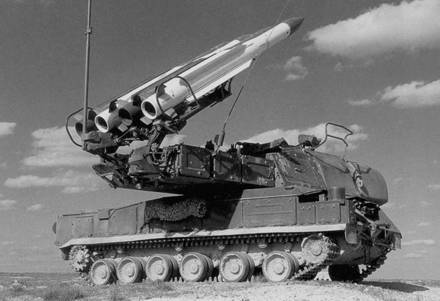
Hero of Socialist Labor, holder of three orders of Lenin, orders of the Patriotic War of I and II degree, Red Star and two orders of Red Banner of Labor, winner of three Stalinist and one State Prize, Honored Worker of Science and Technology of the RSFSR, Doctor of Technical Sciences Nikolai Astrov died out 4 April 1992 of the year.
Information